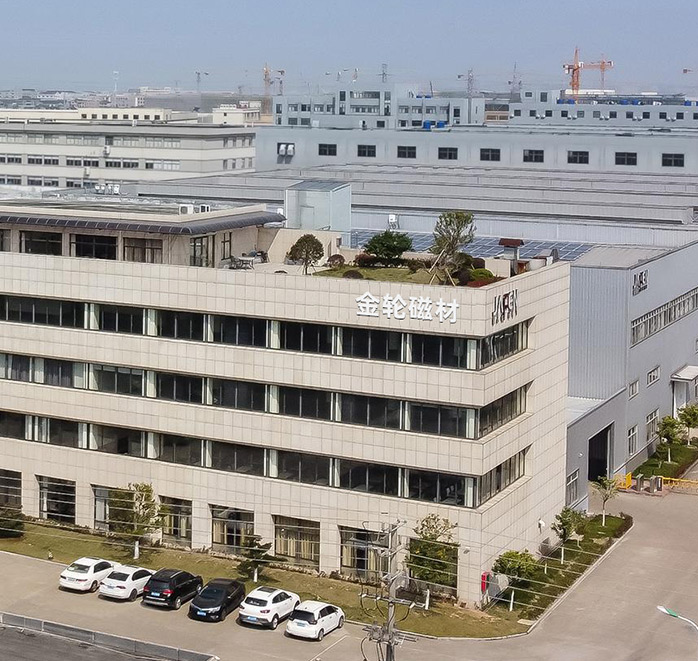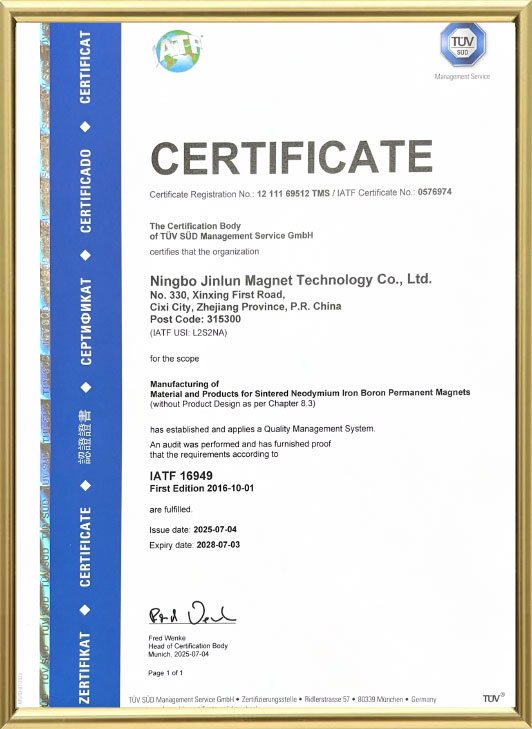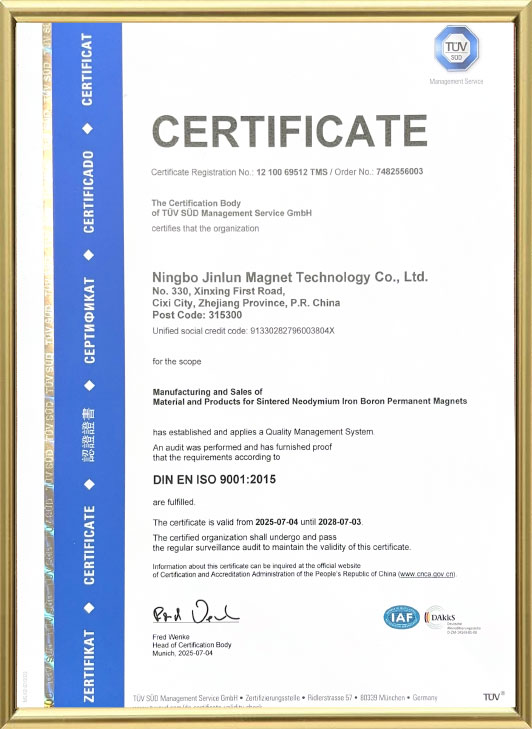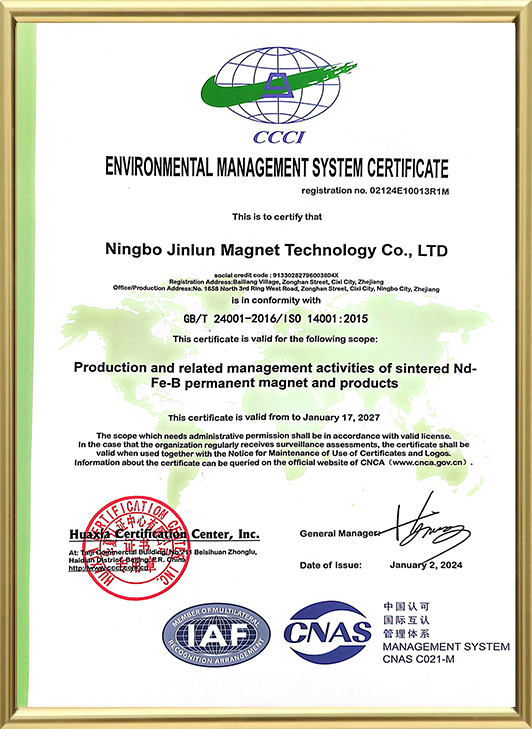Trapezoid Sintered NdFeB: A Comprehensive Overview
1. Introduction to Trapezoid Sintered NdFeB
Trapezoid Sintered NdFeB, as the name implies, is a type of permanent magnet made from sintered neodymium-iron-boron (NdFeB) material and shaped in a trapezoidal form. The trapezoidal shape, with its two parallel sides of different lengths and two non-parallel sides, offers unique advantages in various applications compared to more common magnet shapes like cubes or cylinders.
1.1 Composition of NdFeB Material
NdFeB magnets are composed mainly of neodymium (Nd), iron (Fe), and boron (B). The chemical formula of the main magnetic phase in NdFeB magnets is Nd₂Fe₁₄B. This tetragonal crystal structure gives rise to the excellent magnetic properties of NdFeB magnets. Neodymium, a rare-earth element, plays a crucial role in enhancing the magnetic moment and coercivity of the magnet. Iron provides a high saturation magnetization due to its magnetic properties, and boron helps to stabilize the crystal structure, improving the overall magnetic performance.
1.2 Significance of the Trapezoidal Shape
The trapezoidal shape of these magnets allows for better adaptation to specific mechanical and magnetic requirements in different devices. For example, in some motor designs, the trapezoidal magnets can be arranged in a way that optimizes the magnetic field distribution within the motor, leading to more efficient energy conversion. In certain sensor applications, the trapezoidal shape can be designed to focus the magnetic field in a particular direction, enhancing the sensitivity of the sensor.
2. Manufacturing Process of Trapezoid Sintered NdFeB
The manufacturing process of trapezoid sintered NdFeB magnets is complex and involves several key steps to ensure high-quality and high-performance magnets.
2.1 Raw Material Preparation
Ingot Melting: High-purity neodymium, iron, and boron, along with other alloying elements (such as dysprosium (Dy) or terbium (Tb) in some cases to improve high-temperature performance), are weighed accurately according to the desired magnet composition. These materials are then melted in a vacuum induction furnace. The high-temperature melting process ensures uniform mixing of the elements.
Strip Casting or Ingot Crushing: After melting, the molten alloy can be processed in two common ways. One is strip casting, where the molten alloy is rapidly cooled onto a rotating copper wheel to form thin ribbons. The rapid cooling helps to refine the microstructure. The other method is to cast the alloy into ingots, which are then crushed into smaller pieces for further processing.
2.2 Powder Making
Hydrogen-Decrepitation (HD): If the alloy was cast into ingots, the first step in powder making is often hydrogen-decrepitation. The alloy pieces are exposed to hydrogen gas at an appropriate temperature. The hydrogen reacts with the NdFeB alloy, causing it to crack and break into smaller particles due to the formation of metal hydrides. This process is relatively gentle and helps to preserve the magnetic properties of the material.
Jet Milling: After HD, the particles are further refined to a fine powder using jet milling. In jet milling, high-velocity gas jets are used to accelerate the particles, which then collide with each other or with a target surface, breaking them into even smaller particles. The resulting powder typically has a particle size in the range of a few micrometers, which is suitable for the subsequent pressing process.
2.3 Pressing into Trapezoidal Shape
Die Design: A custom-designed die is created to shape the NdFeB powder into the trapezoidal form. The die is made of high-strength materials to withstand the high pressures during pressing. The dimensions of the die are precisely machined to ensure that the pressed trapezoidal magnets meet the required size and shape tolerances.
Magnetic Alignment (Optional): In many cases, a magnetic field is applied during the pressing process. This magnetic field aligns the magnetic domains of the NdFeB powder particles in a preferred direction. When the powder is pressed under the influence of the magnetic field, the resulting magnet will have a higher magnetic performance in the aligned direction. The alignment process can significantly enhance the remanence and coercivity of the final magnet.
Isostatic Pressing (for Some Applications): For applications where extremely high density and uniform density are required, isostatic pressing may be used. In isostatic pressing, the powder-filled die is placed in a pressure vessel filled with a fluid (such as oil). High pressure is applied uniformly from all directions, which helps to achieve a more homogeneous and denser pressed part compared to uniaxial pressing.
2.4 Sintering and Annealing
Sintering: The pressed trapezoidal green compacts are placed in a high-temperature sintering furnace. Sintering is carried out in a vacuum or an inert gas atmosphere to prevent oxidation. During sintering, the temperature is raised to a level (usually around 1000-1100 °C) where the NdFeB particles bond together through solid-state diffusion. This process significantly increases the density of the magnet and improves its mechanical and magnetic properties.
Annealing: After sintering, the magnets are usually annealed. Annealing involves heating the magnets to a lower temperature (around 600-800 °C) and then slowly cooling them. This process helps to relieve internal stresses generated during sintering, further optimize the magnetic domain structure, and enhance the magnetic performance, especially the coercivity of the magnet.
2.5 Machining and Surface Treatment
Machining: The sintered trapezoidal magnets may need to be machined to achieve the final desired dimensions and surface finish. Machining processes such as grinding, cutting, and drilling can be used. However, NdFeB magnets are relatively brittle, so special care must be taken during machining to avoid cracking or chipping. Diamond-coated tools are often used for machining NdFeB magnets due to their hardness and wear resistance.
Surface Treatment: NdFeB magnets are prone to corrosion, especially in humid or corrosive environments. To protect the magnets, various surface treatment methods are employed. Common surface treatments include nickel-copper-nickel (Ni-Cu-Ni) plating, zinc (Zn) plating, epoxy coating, and parylene coating. Ni-Cu-Ni plating provides good corrosion resistance and a shiny metallic finish. Zinc plating is cost-effective and offers moderate corrosion protection. Epoxy coating can provide a thick, durable, and corrosion-resistant layer, while parylene coating offers excellent barrier properties against moisture, chemicals, and fungi.
As a leading China sintered NdFeB magnet manufacturer with over 30 years of industry experience, Ningbo Jinlun Magnet Technology Co., Ltd. has a professional grasp of each link in the manufacturing process of trapezoid sintered NdFeB. The company is equipped with internationally advanced permanent magnet production equipment, which can accurately control the parameters of each step from raw material melting to surface treatment. For example, in the powder making stage, the company uses high-precision jet milling equipment to ensure that the particle size of the NdFeB powder is uniformly controlled in the optimal range, laying a solid foundation for the subsequent pressing and sintering processes. In the die design link, the company's professional team can customize dies of different specifications according to the unique trapezoidal shape requirements of customers, ensuring that the pressed magnets have high shape accuracy and dimensional consistency.
3. Magnetic Properties of Trapezoid Sintered NdFeB
The magnetic properties of trapezoid sintered NdFeB magnets are highly desirable in many applications.
3.1 Remanence (Br)
Remanence is the magnetic flux density that remains in a magnet after the external magnetic field used to magnetize it has been removed. Trapezoid sintered NdFeB magnets can have very high remanence values. For example, in high-performance grades, the remanence can reach up to 1.4-1.48 tesla (T) (14-14.8 kG). High remanence means that the magnet can produce a strong magnetic field even without an external magnetic source, which is crucial for applications such as electric motors, where the magnetic field of the magnet interacts with the electric current in the coils to generate torque.
3.2 Coercivity (Hc)
Coercivity is the measure of the ability of a magnet to resist demagnetization. NdFeB magnets have high coercivity, which ensures that their magnetic properties are stable under normal operating conditions. Intrinsic coercivity (Hcj) values for trapezoid sintered NdFeB magnets can range from several hundred to over 2000 kA/m. High coercivity is important in applications where the magnet may be exposed to external magnetic fields or temperature variations that could potentially demagnetize it. For instance, in magnetic resonance imaging (MRI) systems, the NdFeB magnets need to maintain their magnetic field precisely, and high coercivity helps in achieving this stability.
3.3 Maximum Energy Product (BH)max
The maximum energy product is a key parameter that represents the amount of magnetic energy stored in a magnet per unit volume. Trapezoid sintered NdFeB magnets typically have high (BH)max values, which can range from around 200-500 kJ/m³. A high (BH)max indicates that the magnet can deliver a large amount of magnetic energy, making it efficient for applications such as generators, where the magnetic energy is converted into electrical energy. In a wind turbine generator, for example, high-energy-product NdFeB magnets can help in generating more electricity from the same amount of wind energy.
3.4 Temperature Coefficient
The magnetic properties of NdFeB magnets are affected by temperature. The temperature coefficient of remanence (αBr) and coercivity (βHcj) describe how these properties change with temperature. Generally, NdFeB magnets have a negative temperature coefficient, meaning that as the temperature increases, the remanence and coercivity decrease. However, different grades of NdFeB magnets have different temperature coefficients. For example, some high-temperature-resistant grades have been developed with lower temperature coefficients, allowing them to maintain their magnetic properties better at elevated temperatures. In applications such as automotive motors, which can operate at relatively high temperatures, high-temperature-resistant NdFeB magnets are used to ensure stable performance.
Ningbo Jinlun Magnet Technology Co., Ltd., as a scientific, technological and innovational enterprise specialized in the magnet industry, has in-depth research on the magnetic properties of trapezoid sintered NdFeB. The company's R&D team continues to innovate, and by optimizing the composition ratio of raw materials and improving the sintering and annealing processes, it has successfully developed high-performance trapezoid sintered NdFeB products with excellent magnetic properties such as high remanence, high coercivity and high maximum energy product. At the same time, the company can also adjust the product formula according to the temperature environment requirements of different application scenarios of customers, providing high-temperature-resistant trapezoid sintered NdFeB products to meet the diverse needs of customers.
4. Applications of Trapezoid Sintered NdFeB
The unique shape and excellent magnetic properties of trapezoid sintered NdFeB magnets make them suitable for a wide range of applications.
4.1 Electric Motors
Permanent Magnet Synchronous Motors (PMSM): In PMSMs, trapezoid sintered NdFeB magnets are often used in the rotor. The trapezoidal shape can be designed to fit the rotor structure more effectively, optimizing the magnetic field distribution and reducing torque ripple. PMSMs are widely used in various applications, including electric vehicles, industrial machinery, and home appliances. In electric vehicles, PMSMs with NdFeB magnets offer high efficiency and high power density, contributing to longer driving ranges and better performance.
Brushless DC Motors (BLDC): BLDC motors also frequently employ trapezoid NdFeB magnets. The magnets in the rotor interact with the stator windings to produce rotational motion. The trapezoidal shape can enhance the motor's performance by providing a more uniform magnetic field, leading to smoother operation and higher efficiency. BLDC motors are used in applications such as computer fans, power tools, and robotic systems.
4.2 Sensors
Position Sensors: Trapezoid NdFeB magnets can be used in position sensors, such as Hall-effect sensors. The unique shape of the magnet can be designed to create a non-uniform magnetic field that changes in a predictable way with the position of the magnet relative to the sensor. This allows for accurate detection of the position of a moving object. Position sensors are used in applications such as automotive throttle position sensors, elevator position sensors, and industrial robotic arm position sensors.
Magnetic Field Sensors: In some magnetic field sensors, trapezoid sintered NdFeB magnets are used as a reference magnetic field source. The precise magnetic properties of the NdFeB magnet help in calibrating and enhancing the sensitivity of the sensor. These sensors are used in applications such as geomagnetic field detection for navigation systems and magnetic anomaly detection in security and geological exploration.
4.3 Medical Devices
Magnetic Resonance Imaging (MRI): In MRI systems, strong and stable magnetic fields are required to generate detailed images of the human body. Trapezoid sintered NdFeB magnets can be used in some smaller or specialized MRI units. Their high magnetic performance and the ability to be shaped into specific forms can help in optimizing the magnetic field homogeneity within the imaging volume, leading to better-quality images.
Magnetic Therapy Devices: Some magnetic therapy devices use trapezoid NdFeB magnets. The magnetic field of the magnet is believed to have a therapeutic effect on the body, such as promoting blood circulation and relieving pain. The trapezoidal shape can be designed to target specific areas of the body more effectively.
4.4 Other Applications
Aerospace Industry: In aerospace applications, trapezoid sintered NdFeB magnets can be used in various components, such as actuators and sensors. Their high magnetic performance and relatively lightweight compared to some other magnetic materials make them suitable for use in aircraft and satellites, where weight reduction is crucial for fuel efficiency and payload capacity.
Renewable Energy Systems: In addition to wind turbine generators mentioned earlier, trapezoid NdFeB magnets can also be used in some small-scale hydroelectric generators. The magnets help in converting the mechanical energy of the flowing water into electrical energy. Their shape can be optimized to fit the generator's design, improving the overall efficiency of the energy conversion process.
Ningbo Jinlun Magnet Technology Co., Ltd., which integrates innovative research and development with production and manufacturing, focuses on producing high-performance magnets and can provide trapezoid sintered NdFeB products suitable for various application fields. The company has a deep understanding of the application needs of different industries. For example, for the electric motor industry, the company provides trapezoid sintered NdFeB magnets with optimized magnetic field distribution to help improve motor efficiency and reduce energy consumption; for the medical device industry, the company's products have high magnetic stability and precision, meeting the strict requirements of medical equipment for magnet performance. By continuously innovating to provide high-quality and competitive products, the company has won the trust of customers in many application fields.
product category
PDF Download
Trapezoid Sintered NdFeB Manufacturers
About Jinlun Magnet

News
-
Magnetic Energy Density as the Core: What Magnetic Strength Must a Neodymium Magnet Possess to Adapt to Industrial Scenarios?
In cross-border industrial procurement, the magnetic energy density of a Neodymium Magnet is the core indicator determining its application value. As one of the permanent magnet materials with the highest commercialized energy product currently available, the ...
READ MORE -
Which Automotive Sintered NdFeB Magnets Meet High-Temperature and Anti-Demagnetization Requirements?
What Core Performance Indicators Define High-Temperature Anti-Demagnetization Capability? Automotive sintered NdFeB magnets face severe temperature challenges, with operating temperatures in some motors reaching up to 200℃. To resist thermal demagnetization, t...
READ MORE -
Why Choose Sintered NdFeB Magnets for Consumer Electronics?
In the fast-paced world of consumer electronics—where devices like smartphones, wireless earbuds, smartwatches, and laptops are getting smaller, lighter, and more powerful—component selection is critical. Magnets play an invisible yet vital role in these devic...
READ MORE
 EN
EN English
English 中文简体
中文简体 русский
русский Deutsch
Deutsch 日本語
日本語 한국어
한국어
















